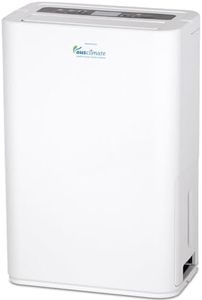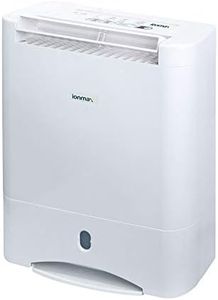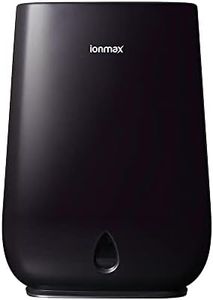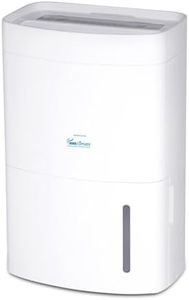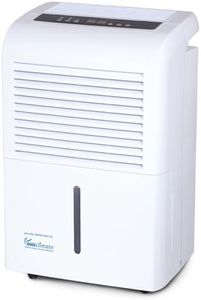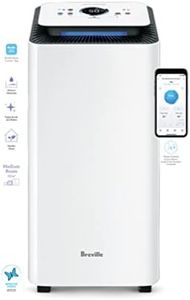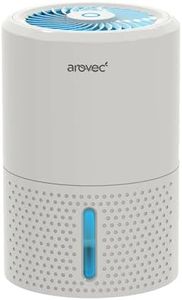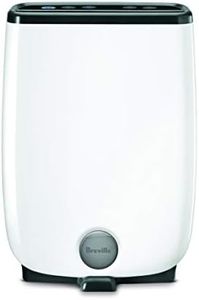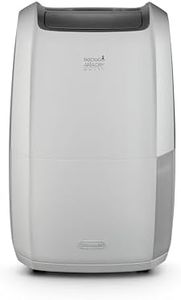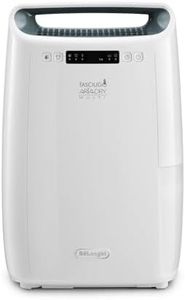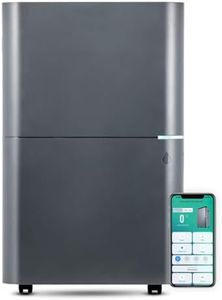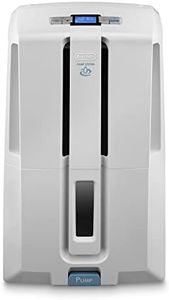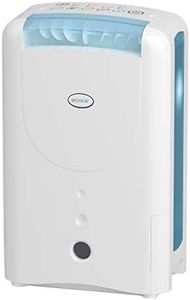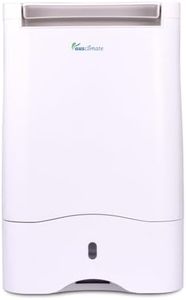We Use CookiesWe use cookies to enhance the security, performance,
functionality and for analytical and promotional activities. By continuing to browse this site you
are agreeing to our privacy policy
10 Best Desiccant Dehumidifiers
From leading brands and best sellers available on the web.By clicking on a link to a third party's website, log data is shared with that third party.
Buying Guide for the Best Desiccant Dehumidifiers
Choosing the right desiccant dehumidifier can make a big difference in keeping your indoor spaces dry, comfortable, and free from excess moisture. Desiccant dehumidifiers use a special material to absorb water from the air, making them particularly good for cooler environments or spaces where traditional refrigerant dehumidifiers might not work as efficiently. Before selecting one, it’s important to understand your specific needs—such as the size of the area you want to dehumidify, the humidity level you’re dealing with, and your preferred level of maintenance.Moisture Removal CapacityMoisture removal capacity indicates how much water the dehumidifier can extract from the air in a given period, usually measured in liters per day. This spec is important because it tells you if the device is strong enough for your space—small units might manage a closet or small room, while larger ones can handle basements or open areas. Values can be grouped roughly: small capacities (under 10L/day) suit small rooms or mild dampness, medium capacities (10-20L/day) are good for average-sized rooms, and high capacities (over 20L/day) are better for basements or seriously damp environments. Choose a capacity that matches or slightly exceeds the needs of your room to ensure effective drying.
Operating Temperature RangeThe operating temperature range tells you at what temperatures the dehumidifier can function effectively. This is vital for desiccant models because they’re often used in unheated spaces like garages or basements. Typical ranges start as low as 1-5°C and go up to around 35°C. If you’re planning to dehumidify a cool space, make sure the lower end of the operating range covers your coldest conditions; for warmer areas, almost any unit will work, but still check the upper limit for safety.
Water Collection and Drainage OptionsWater collection refers to how the dehumidifier gathers and disposes of the moisture it removes. Smaller models have removable water tanks you need to empty by hand, while larger or more advanced units offer continuous drainage options using a hose. For small, occasionally damp places, a tank that you can manually empty might be fine. If you want something that works all the time or in a harder-to-reach location, look for continuous drainage compatibility so you won’t have to empty tanks often.
Noise LevelNoise level tells you how quietly the dehumidifier operates, usually measured in decibels (dB). Some people are sensitive to background noise, especially if the unit will be in a bedroom or living space. Lower dB values (under 40 dB) are very quiet, medium levels (40-50 dB) are noticeable but acceptable for most, and high values (over 50 dB) might be disruptive. Think about where you’ll use the device; for living or sleeping areas, aim for a quieter unit.
Size and PortabilityThe physical size and portability determine how easily you can move or store the dehumidifier. Some are compact and lightweight and have handles, making them easy to move between rooms, while heavy-duty units can be larger and less mobile. If you plan to dehumidify multiple areas or want to store the unit away when not in use, look for lighter, more portable models; for a permanent solution in one spot, size may matter less.
Control FeaturesControl features include things like adjustable humidity settings, timers, digital displays, or automatic shut-off. These let you tailor the operation to your needs, such as maintaining a set humidity level or running the machine only at certain times. If you want set-and-forget convenience or are trying to manage moisture precisely (for example, storing musical instruments or archival materials), look for units with more sophisticated controls. Simpler models are fine for general use.
Filter MaintenanceThe dehumidifier’s filter helps trap dust or particles as air passes through, which can improve air quality. Maintenance here refers to how easy it is to access, clean, or replace the filter. For people concerned about allergies or general air cleanliness, easy-to-clean or long-lasting filters are helpful. If you prefer less hands-on work, check for filters that need only occasional attention.
